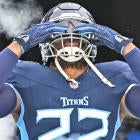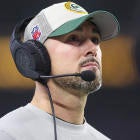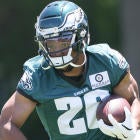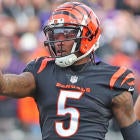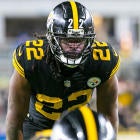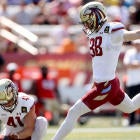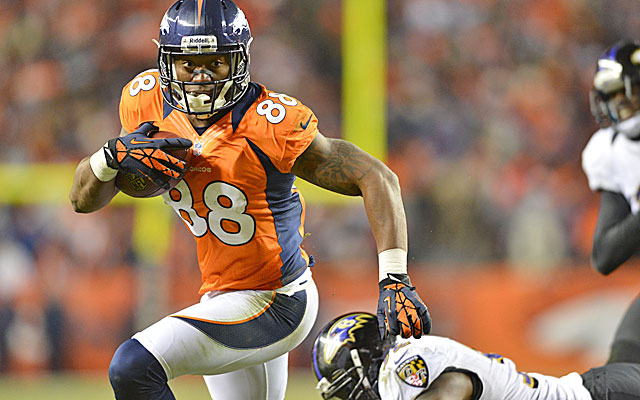
Merton Hanks played nearly a decade in the NFL at safety. When he was with the San Francisco 49ers, through the 1990s, he was a devastating weapon, routinely turning interceptions into big gains. He made four Pro Bowls and won a Super Bowl.
For much of his career, Hanks wore thigh and kneepads. Many players didn’t but Hanks always believed the extra protection kept him safe. Hanks found that when he didn’t wear them he often received thigh bruises.
Did the padding slow him down?
Hanks laughs.
“Back then, yes,” he said in an interview with CBSSports.com. “But padding now is lighter.”
This is a key point in an issue that’s receiving little attention but will soon be critical. Beginning next season, all NFL players will be required to wear thigh and knee pads in games. Hanks, now the NFL’s vice president of football operations, will be one of the people overseeing the implementation of the new rule.
This is a fact few are completely aware of. Even some players seem to be slightly confused. But this is the main fact: If a player doesn’t wear thigh or knee pads, they cannot play in games. Period. That’s it.
No thigh or knee pads, no play.
Here’s how the new system will work. If a player is in a game without the required padding, at the next stop in play, an NFL equipment monitor will inform the back judge that a player is without the mandatory equipment (it’s the back judge who comes to the sideline to work with television personnel for the commercial timeouts).
The back judge would then inform the referee and the referee would tell the head coach that the player isn’t eligible until the pads are on. Hip and butt pads remain optional.
Making the pads mandatory is a smart idea. No brainer, actually. It will save knees and thighs from unnecessary damage. It will also possibly help reduce concussions. Think of it this way: A knee accidently hitting a helmeted head is different perhaps from a padded knee hitting a helmeted head.
“It’s a change of philosophy,” Hanks said. “We don’t allow players to play without their helmets or shoulder pads ... no need to take on added risk of thigh bruises or worse.”
There are still players opposed to the new rules. In fact, in speaking with three veterans this week, none of them knew that not having the pads meant they would be disqualified from playing. It apparently hasn’t sunk in to the entire player base that this rule is no longer theory.
One player told me some players plan to constantly attempt to sneak onto the field during games without the pads. Good luck with that.
“This rule is dumb,” said one veteran, “and now the game is going to slow down dramatically.”
He doesn’t mean in terms of time. He means in term of speed.
That’s a common complaint -- the speed of the sport will slow -- but is that accurate?
Probably not. Padding now is so light the effect on speed is minimal. Already, some players are wearing them. The NFL has tested the newer pads at recent Pro Bowls and then Baltimore players Ed Reed and Bernard Pollard wore them during the Super Bowl.
“This didn’t stop them from making plays,” said Hanks, “this didn’t stop them from winning the Lombardi Trophy.”
What will the game look like next season? It will look the same. It will still be fast, violent and gorgeous. Just with more padding.












